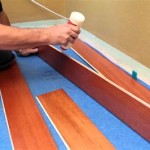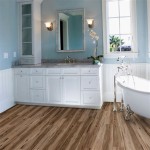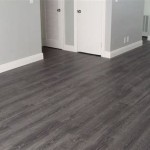Flooring Showdown: Tiles vs. Granite - Which Is Best?
Selecting the appropriate flooring material is a crucial decision for any construction or renovation project. The choice impacts aesthetics, functionality, durability, and overall cost. Two popular options, tiles and granite, offer distinct advantages and disadvantages. Determining which is "best" depends entirely on the specific needs and priorities of the space in question. A comprehensive evaluation involves examining factors such as cost, maintenance, durability, appearance, and suitability for different applications.
Tiles, broadly defined, encompass a wide range of materials including ceramic, porcelain, and natural stone variations like slate or travertine. Granite, on the other hand, is a specific type of natural igneous rock known for its hardness and distinctive crystalline texture. Understanding the properties of each material is essential for making an informed decision.
Cost Comparison: Initial Investment and Long-Term Expenses
The initial cost of materials and installation can significantly influence flooring choices. Generally, ceramic and porcelain tiles tend to be more affordable than granite. The price of tiles varies depending on the material, size, design, and manufacturer. Basic ceramic tiles are often the most economical, while more intricate porcelain or specialized designs can increase the price considerably. Installation costs for tiles are also generally lower than those for granite, as tiles are lighter and easier to handle, requiring less specialized equipment and labor. Furthermore, the relative ease of installation translates to shorter project timelines, contributing to overall cost savings.
Granite, being a premium natural stone, commands a higher price point. The cost is affected by the granite’s rarity, color, veining patterns, and origin. More exotic or unusual granite varieties can be significantly more expensive. Installation costs are also higher due to the weight and density of granite, which necessitate specialized tools and skilled installers. Cutting, shaping, and polishing granite requires precision and expertise, adding to the labor costs. Despite the higher initial investment, granite's durability and longevity can translate to lower long-term replacement costs. Therefore, a comprehensive cost analysis should consider not only the upfront expenses but also the potential lifespan and maintenance requirements of each material.
Beyond initial costs, long-term expenses related to maintenance and repair should also be factored in. While both tiles and granite are relatively low-maintenance compared to other flooring options like carpets, they do require periodic cleaning and sealing. The frequency and cost of these maintenance tasks can vary depending on the material and the level of traffic the floor endures.
Durability and Maintenance: Withstanding Wear and Tear
Durability is a critical consideration for any flooring material, particularly in high-traffic areas. Granite is renowned for its exceptional hardness and resistance to scratches, stains, and heat. Its dense structure makes it less porous than many types of tiles, thus minimizing the absorption of liquids and preventing staining. Granite can withstand significant foot traffic and is an excellent choice for areas such as kitchens, hallways, and entryways. Regular sealing is recommended to further enhance its stain resistance, typically every one to two years depending on usage.
Tiles exhibit varying degrees of durability depending on the material. Porcelain tiles are generally more durable than ceramic tiles due to their denser composition and lower water absorption rate. Porcelain is also resistant to scratches and stains and can be suitable for high-traffic areas. Ceramic tiles, while less durable than porcelain, are still a viable option for areas with moderate traffic, such as bathrooms and bedrooms. The grout lines between tiles are susceptible to staining and require regular cleaning and sealing to maintain their appearance and prevent the growth of mold and mildew. The type of grout used also impacts the durability and resistance to staining and moisture.
Maintenance for both tiles and granite is relatively straightforward. Regular sweeping or vacuuming to remove dirt and debris is essential. Occasional mopping with a mild detergent is sufficient for cleaning. Harsh chemicals and abrasive cleaners should be avoided as they can damage the surface of both materials. For granite, using pH-neutral cleaners is particularly important to prevent etching. Sealing grout lines and granite surfaces periodically helps to protect against stains and moisture damage, extending the lifespan of the flooring.
The ability of a flooring material to withstand water damage is also a significant factor. Granite, being a natural stone, can be somewhat porous if not properly sealed. However, with regular sealing, it becomes highly water-resistant. Porcelain tiles are virtually impervious to water due to their low absorption rate, making them an ideal choice for bathrooms and other areas prone to moisture. Ceramic tiles are more porous than porcelain and require more frequent sealing in wet environments. The quality of installation is crucial in preventing water damage. Properly installed tiles and granite with adequate waterproofing beneath can prevent water from seeping into the subfloor, which can lead to structural damage and mold growth.
Aesthetic Considerations: Appearance and Design Versatility
The aesthetic appeal of flooring significantly contributes to the overall ambiance of a space. Granite offers a sophisticated and luxurious look with its natural variations in color and veining. Each slab of granite is unique, providing a distinctive and elegant aesthetic. Granite is available in a wide range of colors, from light neutrals to dark shades, allowing for coordination with various design schemes. The polished surface of granite reflects light, creating a sense of spaciousness and brightness. The timeless beauty of granite makes it a popular choice for high-end residential and commercial applications.
Tiles offer greater design versatility compared to granite. Tiles are available in an extensive array of colors, patterns, sizes, and textures, allowing for endless design possibilities. Ceramic and porcelain tiles can mimic the look of natural stone, wood, or even concrete, providing a cost-effective alternative to these materials. The use of different tile sizes and layouts can create unique patterns and visual interest. Mosaic tiles are particularly versatile, allowing for intricate designs and decorative accents. The wide variety of tile options makes it easier to achieve a specific aesthetic vision, from traditional to contemporary.
The appearance of grout lines can significantly impact the overall aesthetic of tiled floors. The color and width of the grout lines can be customized to complement the tiles. Darker grout can conceal dirt and stains, while lighter grout can create a more seamless look. Proper grout cleaning and maintenance are essential for preserving the appearance of tiled floors. Granite floors, due to the larger slab sizes, typically have fewer grout lines, contributing to a cleaner and more uniform appearance.
The texture of the flooring also plays a role in its aesthetic appeal and functionality. Granite typically has a smooth, polished surface, which can be slippery when wet. Textured tiles are available to provide better traction in areas prone to moisture, such as bathrooms and kitchens. The choice of texture should consider both aesthetic preferences and safety requirements.
Suitability for Different Applications: Room-Specific Factors
The choice between tiles and granite also depends on the specific application and the intended use of the room. For kitchens, both materials are suitable due to their durability and resistance to stains and heat. However, granite may be preferred for countertops and backsplashes due to its seamless appearance and resistance to scratches. Tiles are a more cost-effective option for flooring, particularly in larger kitchens. The ease of cleaning and maintenance makes both materials practical choices for this high-traffic area.
In bathrooms, porcelain tiles are often the preferred choice due to their impermeability to water and resistance to mold and mildew. Granite can also be used in bathrooms, particularly for vanity tops and shower walls, but it requires proper sealing to prevent water damage. The slip resistance of the flooring is an important consideration in bathrooms, and textured tiles may be necessary to prevent accidents.
For living rooms and bedrooms, both tiles and granite can be used, depending on the desired aesthetic and budget. Granite can add a touch of luxury and sophistication to these spaces, while tiles offer greater design versatility. The comfort level of the flooring should also be considered, particularly in bedrooms, where a softer and warmer surface may be preferred. Radiant heating can be installed beneath both tiles and granite to provide added warmth and comfort.
For outdoor applications, such as patios and walkways, durable and weather-resistant materials are essential. Granite is a suitable choice for outdoor flooring due to its ability to withstand extreme temperatures and weather conditions. However, it can be expensive. Certain types of tiles, such as porcelain pavers, are specifically designed for outdoor use and offer a more cost-effective alternative. These pavers are resistant to frost, fading, and staining, making them ideal for outdoor environments. The slip resistance of the flooring is particularly important for outdoor applications, and textured surfaces are recommended to prevent accidents.
In commercial settings, durability and ease of maintenance are paramount. Granite is often used in high-end commercial applications, such as hotel lobbies and office buildings, due to its elegant appearance and long-lasting durability. Tiles are a more common choice for commercial spaces due to their cost-effectiveness and wide range of design options. Large-format tiles are particularly suitable for commercial applications as they minimize grout lines and create a more seamless look. The slip resistance of the flooring is also a critical consideration in commercial settings, and appropriate safety measures should be implemented.
Ultimately, the best choice between tiles and granite depends on a complex interplay of factors including budget, aesthetic preferences, functional requirements, and the specific characteristics of the space in question. A careful evaluation of these factors will lead to a flooring solution that meets both aesthetic and practical needs.
Vitrified Tiles Or Granite Which Is A Better Option For Your Home

Which Is Better Granite Or Marble Flooring Skytouch
.webp?strip=all)
Which Is Better Granite Or Marble Flooring Skytouch

Granite Vs Porcelain Tiles Which Is The Best Flooring Option

Tiles Vs Granite Which Flooring Option Is Best For Your Home

Granite Vs Porcelain Tiles Which Is The Best Flooring Option

Which Is Better For Flooring Marble Granite Or Tile Thediyplan

Which Is Better Granite Or Marble Flooring Skytouch

Tile Vs Granite Flooring Which Is More Durable And Cost Effective Simpolo Tiles Bathware
Vitrified Tiles Or Granite Which Is A Better Option For Your Home
Related Posts








